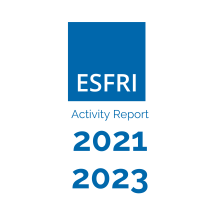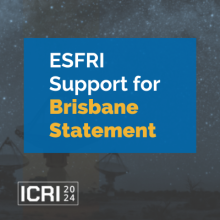ARIE release Joint Position Paper on Horizon Europe Missions
The Analytical Research Infrastructures of Europe (ARIEs) published a joint position paper highlighting how a common, complementary approach will strengthen the European analytical research infrastructures collectively and will, thus, help address the societal challenges of the Horizon Europe Missions framework programme.
“The ARIEs provide unique windows into the workings of the world around us,” says Caterina Biscari, Chair of LEAPS and Director of the ALBA Synchrotron in Spain. “The cross-border cooperation within Europe allows for harnessing the power of its analytical research infrastructures collectively, to fuel the cutting-edge R&D required by the five Horizon Europe Missions. Nowhere else in the world is this readily possible.”
The ARIEs are centres of scientific and technological excellence, delivering services, data and know-how to a growing and diverse user community of more than 40,000 researchers in academia and industry, across a range of domains: the physical sciences, energy, engineering, the environment and the earth sciences, as well as medicine, health, food and cultural heritage. They include powerful photon sources, such as synchrotrons, laser systems and free-electron lasers; sources of neutrons, ions and other particle beams; and facilities dedicated to advanced electron-microscopy and high magnetic fields.
“Insights into materials and living matter made possible by their collective tools underpin the advanced research necessary for the success of the Horizon Europe Missions,” underlines Helmut Schober, Chair of LENS and Director of the Institut Laue-Langevin in France. ”The ARIEs provide free access to the scientific user community based upon scientific excellence and open data. Access to the ARIEs is equally being made simpler and smarter, more democratised and less reliant on travel. As part of this effort, we are also looking into the possibility of providing ‘challenge-driven’ access in order to speed up the scientific output for societal relevant themes.”
“Within the Horizon Europe Missions, there is an unprecedented opportunity to deploy the analytical techniques, skills and know-how of the ARIEs on a large scale, targeting the Missions’ individual research needs,” concludes the coordinator of the ARIE working group, Mirjam van Daalen, vice Chair of the LEAPS coordination board and Chief of Staff of the Photon Science Division at Paul Scherrer Institute (PSI) in Switzerland. “Thanks to the nature of Europe and the ease of multi-disciplinary, cross-border partnerships, the many varied and complementary analytical techniques of the ARIEs can be brought together in coordination with the Horizon Europe Mission specialists. As a result, the unique value of the ARIEs can be added to the Missions, accelerating research and driving solutions for Europe’s citizens.”
To read the full ARIE joint position paper, please download the PDF.
For more information on ARIEs, please visit the websites: DREAM, EMFL, INSPIRE, LaserLab-Europe, LENS, LEAPS, RADIATE.




